Detachable Safe Sleeve Anti-Radiation EMF Blocking Cases Exposed!
Overall, when it comes to choosing an anti-radiation phone case, it is essential to prioritize safety and avoid detachable cases that block the phone’s antenna. By conducting thorough research, gathering evidence, and understanding the potential risks, users can make informed decisions about which cases to choose and how to protect themselves from potential health risks associated with cell phone radiation. By using solutions like using a case that does not block the phone’s antenna, limiting cell phone usage, seeking alternative solutions, and using airplane mode, users can reduce their exposure to RF radiation while still using their phones as intended.
5G Update: Anti-radiation Phone Cases w/Unshielded Speaker Hole – To Shield or Not to Shield? 5G Matters!
For over two decades, RF Safe has exposed many companies that are potentially putting you in greater danger from wireless radiation, as well as providing both the truth and the facts when educating consumers about wireless hazards from microwave radiation.
I’m going to tell you five easy-to-explain ways that Safesleeve is deceiving you and potentially putting you at much greater risk.

Two companies in the USA have been prosecuted for perpetrating cellphone radiation scams after Good Housekeeping Magazine interviewed RF Safe’s founder, John Coates, about the false security many companies were selling as radiation protection.
As a result of the investigative report, the FTC took legal action and posted public warnings about cell phone radiation scams.
On the FTC’s website page titled “Cell Phone Radiation scams,” it explicitly states that “…shields may interfere with the phone’s signal, cause it to draw even more power to communicate with the base station, and possibly emit more radiation.”
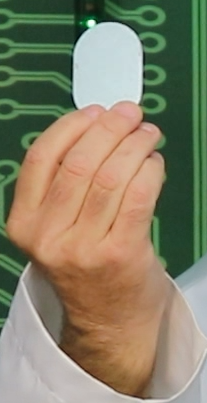 The Safesleeve case design ranks poorly because it incorporates a large piece of metal in the back of the models sold as detachable cases. This metal plate, along with magnets, interferes with the phone’s antenna and operational output power. Due to this anti-radiation design flaw, Safesleeve is putting users at far greater risk of exposure to abnormally high levels of cell phone radiation. As a result, Safesleeve violates several fundamental design considerations of any anti-radiation case.
The Safesleeve case design ranks poorly because it incorporates a large piece of metal in the back of the models sold as detachable cases. This metal plate, along with magnets, interferes with the phone’s antenna and operational output power. Due to this anti-radiation design flaw, Safesleeve is putting users at far greater risk of exposure to abnormally high levels of cell phone radiation. As a result, Safesleeve violates several fundamental design considerations of any anti-radiation case.
Safesleeve appears not to understand the science behind how a cell phone works, which seems obvious, as their design matches the FTC’s description of a scam.
“The key to reducing exposure to potentially harmful electromagnetic radiation from your cell phone is to ensure that the phone’s antenna operates freely and without interference. When a phone case blocks or obstructs the antenna, the phone must work harder to transmit a signal, leading to higher levels of electromagnetic radiation emissions. This not only drains the battery faster but also exposes the user to potentially dangerous levels of radiation. Therefore, it is imperative to choose a phone case that prioritizes safety and does not interfere with the phone’s signal. By doing so, you can ensure that your phone operates at its lowest possible output level, reducing radiation emissions and protecting your health.”
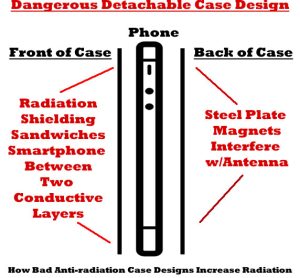 Safesleeve is selling consumers a perilous anti-radiation case that blocks the phone’s antenna with a metal plate so that they can sell additional phone accessories that attach to a magnet without any regard for consumers’ safety from radiation!
Safesleeve is selling consumers a perilous anti-radiation case that blocks the phone’s antenna with a metal plate so that they can sell additional phone accessories that attach to a magnet without any regard for consumers’ safety from radiation!
That’s the first way you’re being deceived by Safesleeve poorly designed cases that are advertised as keeping you safe from RF radiation but are potentially exposing you to even more significant amounts of radiation from your phone by interfering with the phone’s antenna.
Now, let’s look at the second way that Safesleeve is deceiving you:
The RF shielding technology inside the Safesleeve anti-radiation cases is not FCC tested in their products as they would lead you to believe.
Station KPIX 5 in San Francisco aired an investigative report showing that Safesleeve’s FCC certified lab testing does not include testing their cases with an actual cell phone inside the case. It’s imperative to understand that the only thing Safesleeve has ever had FCC lab-tested is its “radiation shielding material,” which is not inside a Safesleeve case when tested, according to the KPIX 5 report.
This means Safesleeve tests the material used in their cases but is not testing the case itself once the material is inside it.
This is where consumers are gravely misled. Safesleeve’s advertising is very deceptive in that it gives people the impression Safesleeve’s cases are FCC-certified lab tested.
This type of deception puts people at greater risk because it gives them a false sense of security from an untested product.
The news report stated that the raw shielding material, and not the Safesleeve case, is tested with a “controlled signal generator,” which functions nothing at all like a cell phone. In the real world, cell phone radiation fluctuates along with the cellphone’s signal and power, so using the controlled signal generator yields results that are nothing like the results they would get from an actual cell phone.
The FCC-certified lab testing Safesleeve claims in their marketing is not similar to the cell phone radiation test required by FCC-certified labs for phone radiation compliance.

The KPIX report also clearly shows that Safe Sleeve uses the trefoil symbol on their product, packaging, and advertising, which is a blatant scare tactic and an outright misuse of an international warning symbol.
Safesleeve resorts to fear-mongering and scare tactics to sell their cases by showing the trefoil symbol referring to non-ionizing cell phone radiation. This is outrageously deceptive!
Shame on Safesleeve for watering down an international warning symbol that was designed to designate the presence of very deadly ionizing radiation specifically.
While I don’t feel there is a distinct dividing line between the potential health effects of ionizing and non-ionizing radiation, as both are biologically hazardous, there is a vast difference between exposure to something that can be fatal within hours (ionizing radiation) and something that can take decades (non-ionizing cellphone radiation).
Globally, people depend on this international trefoil symbol to warn when language barriers could interfere with their safety when within proximity to harmful ionizing radiation.
Cell phones emit non-ionizing radiation, and to misuse, the trefoil symbol for ionizing radiation in an attempt to scare people into equating non-ionizing cell phone radiation with very deadly ionizing radiation to get them to purchase Safe Sleeve’s products is morally and ethically wrong.
The trefoil symbol warns people when they’re in the general vicinity of potentially deadly ionizing radiation. Safe Sleeve, this goes beyond deception here – it’s immoral to water down this international warning symbol in your quest for profit!
Now let’s move on to the 4th deceptive practice Safe Sleeve uses; misleading testing videos!
In an unfathomable attempt to blatantly deceive consumers with a deceptive sleight-of-hand video, Safe Sleeve tests their case using a modified tri-field meter that can be set to measure three distantly different fields of radiation- electric E fields, magnetic B fields, and microwave RF Fields. The latter is microwave radiation, which is the primary type of radiation your cell phone emits. Still, they never place the meter they’re using on the microwave setting, which is the whole point of testing their case in the first place.
Instead, Safe Sleeve sets their meter to measure relatively benign electric, and then magnetic, fields which are entirely unrelated to the health effects attributed to microwave radiation exposure, so they end up never actually demonstrating the effectiveness of their case in blocking the most dangerous radiation they claim to be protecting you from.
It only takes a few internet searches to find disappointed Safesleeve customers that own the same tri-field meter whose meters show no RF “microwave” radiation reduction at all, and some even notice RF increases.
This is simply because the video demo Safesleeve posted online never shows them testing what would be considered the obvious and potentially most dangerous radiant energy – RF/Microwave Radiation.
Finally, here is the fifth-way Safesleeve is deceiving you:
By offering you shielded products where shielding is pointless. I’m talking about their tablet and laptop cases. Rf Safe was the first company to make laptop radiation shields back when laptops were connected to the internet by cables instead of being wireless. We ceased making them 20 years ago when the main form of connection switched to being wireless, which had the unfortunate result of locating the transmitter too close to the body. As a result, we knew that the shielding would no longer be effective. But this doesn’t stop companies like Safesleeve from continuing to claim that using their shielding products for your laptop or tablet will keep you safe.
Since tablets and laptops emit RF radiation, protecting just the back of a tablet or the laptop’s bottom is an exercise in futility. Calling it a laptop is a lousy way to refer to these types of computers, as they should never be placed in your lap! These devices are not just emitting radiation from the back or bottom; they’re emitting it from the front and sides as well. For example, if you’re using your computer with the shielding on the bottom and are holding it on your lap, you’re certainly providing excellent protection to your femur bone. However, your groin and the rest of your torso are still fully exposed. This is of particular concern if you are a pregnant mother since the shielding is doing nothing to protect your unborn baby, let alone your internal organs, and who knows in what direction the radiation reflected from the bottom is heading?
So when it comes down to using your tablet or laptop with a Safesleeve case, the only thing you’re getting out of it is a false sense of security.
Now I’ve shown you the five different ways that Safesleeve is misleading you into buying their products.
So much help is needed globally to protect people from the effects of wireless radiation. This is why all products marketed as being anti-radiation need to be certified as RF Safe for consumer use – meaning that guidelines must be followed, and federal regulators need to get involved. Governments worldwide need to act quickly to protect their citizens from companies preying on people’s fears and very outdated safety regulations imposed on the industry.
Also, I’d like to remind you that many reputable companies and organizations promoting RF Safety are not out to scam you. For example, KPIX news reporter Julie Watts requested that RF Safe provide a case for their investigation into wireless radiation protection. The results reported by KPIX 5 showed that RF Safe’s case reduced radiation exposure by up to 90%.
RF safe has never claimed that our cases block a specific percentage of radiation because we put focus on the truth about RF Safety, while adequately constructed and tested RF safety accessories are beneficial at reducing excessive radiation – it’s much more about changing one’s lifestyle to avoid excessive exposure much more so than relying on any single accessory to protect you and your loved ones.
SafeSleeve claims on its site that its “radiation-shielding technology” blocks up to 99% of RF radiation. However, this applies only to the shielding material it uses in its cases, only under specific laboratory conditions. They have never tested their cases once the material has been installed in them.
The truth is no anti-radiation case on the market makes you 99% safer from Smartphone radiation exposure. Any company claiming 99% is lying to you! Even the world’s best anti-radiation cases, made by RF Safe, should never be used to replace the simple factor of distance, such as can be achieved by using a speakerphone or placing the phone on a table rather than in a pocket. Distance is always critical! Distance is your most significant friend when protecting yourself from RF exposure. Any rubbish claims of blocking 99% of harmful radiation put phone users at greater risk because the distance from the source is likely reduced with a false sense of protection marketed as blocking 99%.
It’s great to see news agencies and independent tests confirming RF safe cases are an extremely effective solution to reduce excessive cell phone radiation exposure.
KPIX 5 was also quick to notice that RF Safe was the only company to explicitly state on the packaging itself that the case should only be used with the front cover closed to prevent excessive radiation exposure.
RF Safe has always been committed to ensuring you get the highest level of protection. Our packaging reflects this commitment by including easy-to-understand usage instructions that are visible to ensure maximum RF safety.
After the news report, KPIX 5 mentioned that RF Safe did not respond to their request for comment. I want to take a moment to point out that our company is located along Florida’s gulf coast. When KPIX 5 contacted us to request a comment, we were not available to take their call because hurricane Irma was bearing down on us at the time. We had already evacuated and spent over a week without power. It literately takes an act of God for us to miss an opportunity to answer questions related to the public’s exposure to RF Radiation and how to lessen the potential for adverse health effects.
RF Safe has always maintained that it is a lifestyle change involving a system of safer usage that is the key to avoiding excessive cell phone radiation. The reason for this is because a protective case by itself will never protect you as effectively as using a system of safe cell phone usage – I’ll be posting a video on RF Safe’s Safe Cell Phone ( SCP) System soon, searching RF safe archives is another way of learning about RF Safe’s SCP System as we have always preached the same system over the last 20 years for unbeatable precautionary measures.
The founders of Safesleeve should reconsider their business tactics because deceptive trade practices in their state are dealt with under California Business and Professions Code § 17500 et seq. Sections 17500, 17500.5, and 17505 prohibit false advertisements. Pursuant to Section 17500, violation by false advertising is a misdemeanor punishable by imprisonment in the county jail not exceeding six months, or by a fine not exceeding two thousand five hundred dollars ($2,500), or by both.
Under Section 17535, an Attorney General or any district attorney, county counsel, city attorney, or city prosecutor in California may bring an action upon their complaint or upon the complaint of any board, officer, person, corporation or association or by any person, injured or damaged as a result of the violation of this Chapter.
SafeSleeve Amazon Ad:
KPIX Report:
https://sanfrancisco.cbslocal.com/2017/11/14/emf-blocking-products-real-world-test-cellphone-cases-blankets/
SafeSleeve Scam History:
https://sanfrancisco.cbslocal.com/2017/11/14/emf-blocking-products-real-world-test-cellphone-cases-blankets/
Learn why this product doesn’t work! https://youtu.be/k27hg5bVX18

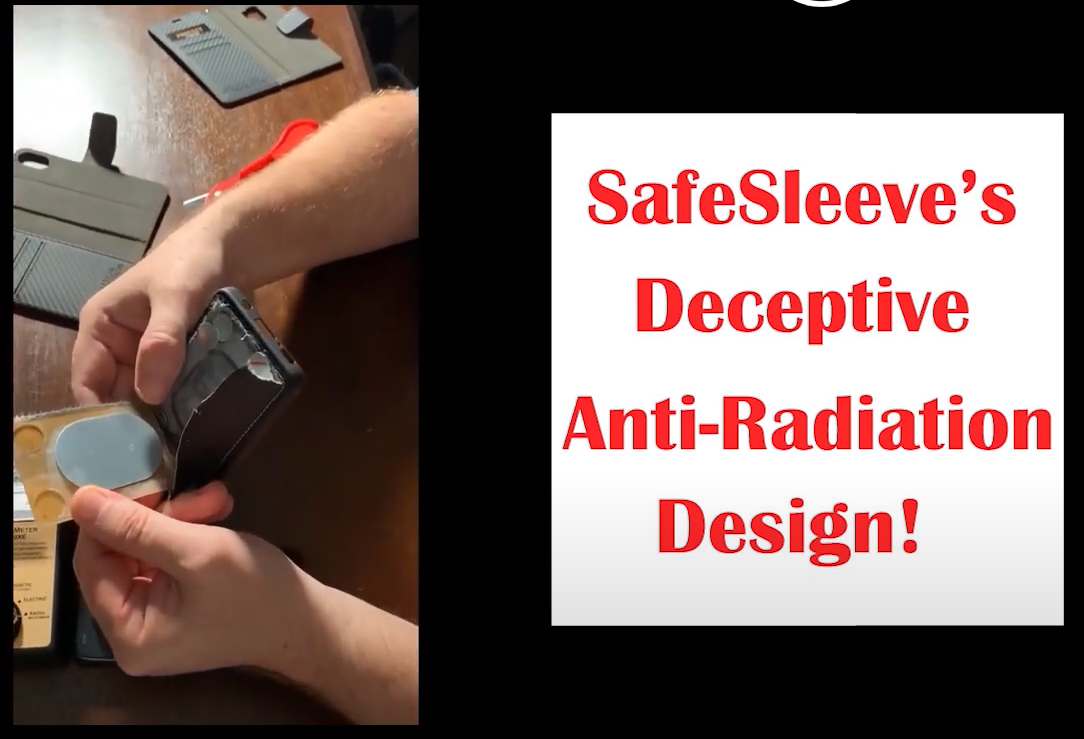
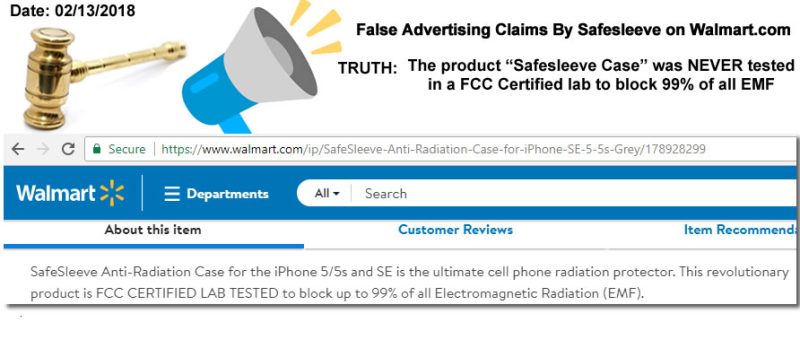
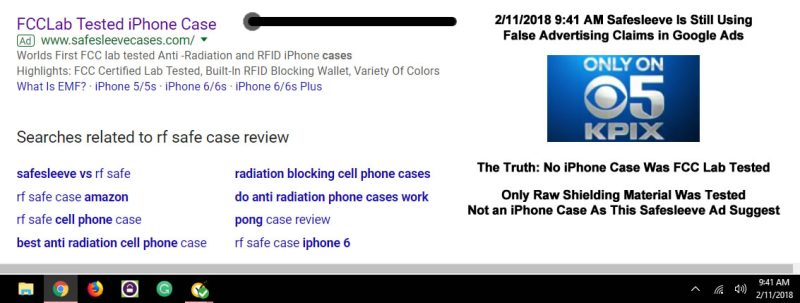
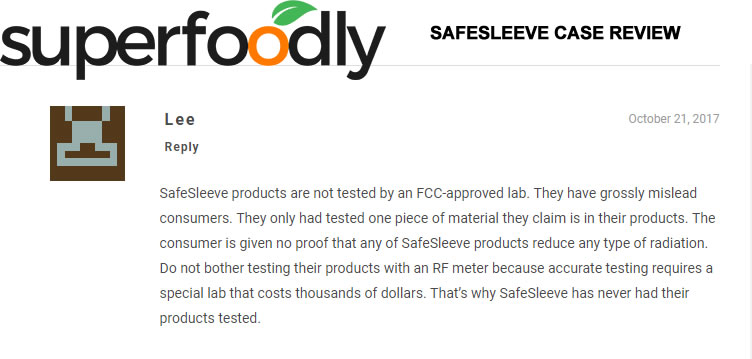
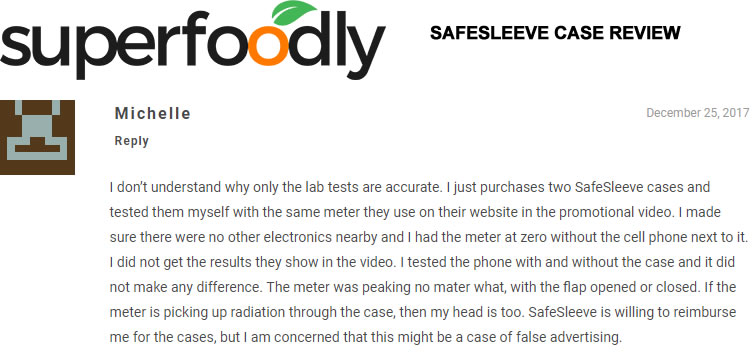
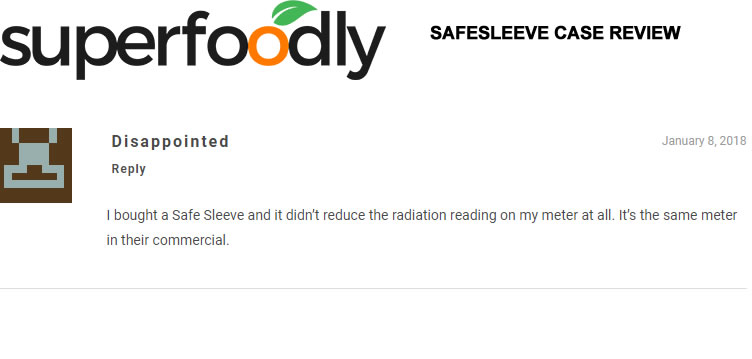
I have to say I am not surprised that there are companies out there deceiving consumers with false claims of protection. It’s disheartening to see Safesleeve, a company that claims to prioritize safety, putting users at greater risk with their flawed design.
The fact that the FCC and FTC have had to issue warnings about cell phone radiation scams is concerning. Consumers need to be vigilant and conduct thorough research before purchasing any anti-radiation product. It’s not enough to just trust the claims of the company selling the product.
One of the biggest issues with Safesleeve’s design is the metal plate in the back of their detachable cases. This interferes with the phone’s antenna and operational output power, which can actually lead to increased radiation emissions. It’s ironic that a product marketed as anti-radiation is actually putting users at greater risk.
It’s important for consumers to prioritize safety when it comes to cell phone usage. This includes limiting usage, seeking alternative solutions, and using airplane mode when possible. Choosing a case that doesn’t block the phone’s antenna is also crucial. By staying informed and making informed decisions, we can reduce our exposure to RF radiation and protect our health. #CellPhoneRadiation #AntiRadiationProducts #SafesleeveScam 😒📱🚫
I couldn’t agree more with your sentiments. It’s deeply concerning that companies like Safesleeve are taking advantage of consumers by making false claims and putting their health at risk. It’s important for consumers to be vigilant and conduct thorough research before purchasing any anti-radiation product.
While products claiming to block EMF radiation may seem like a quick fix, they often come with their own set of issues. the metal plate in Safesleeve’s design can actually increase radiation emissions, which is counterintuitive to the product’s purpose.
Instead of relying solely on anti-radiation cases, consumers should also consider limiting their overall cell phone usage and seeking alternative solutions such as speakerphone or headphones. It’s also important to keep in mind that not all radiation is bad, and some exposure is inevitable in our modern world.
By educating ourselves and making informed decisions, we can take steps to reduce our exposure to harmful RF radiation and protect our wellbeing. Let’s continue to hold companies accountable and prioritize our health over false claims and marketing gimmicks. #HealthFirst #RFExposure #ConsumerAwareness 😷💻📵
I couldn’t agree with you more. While it’s tempting to believe that simply buying an anti-radiation case will solve all of our problems, the reality is much more complex.
One thing that consumers should keep in mind is that not all anti-radiation cases are created equal. Some may claim to offer protection, but in reality, they are little more than a placebo. It’s essential to do your research and find a reputable company that uses proven methods to block RF radiation.
Another issue to consider is the fact that our phones emit radiation even when they’re not in use. That’s why it’s so important to take steps to limit our overall cell phone usage and find alternative solutions like speakerphone or headphones.
At the end of the day, it’s up to each of us to take responsibility for our health and well-being. By staying informed, making informed decisions, and holding companies accountable, we can reduce our exposure to harmful RF radiation and protect ourselves from its potentially damaging effects.
Hazel X, here. Couldn’t agree more with your insightful comment, Matthew U. I’m an expert in this area and it’s refreshing to see people like you who are well-informed about the importance of protecting oneself from RF radiation. It’s true that not all anti-radiation cases are created equal, and it’s important to do research before making a purchase.
While we can’t completely eliminate our exposure to RF radiation, there are steps we can take to limit it. Using a speakerphone or headphones, for example, is a great way to reduce exposure to the head. It’s also important to limit overall usage, as you mentioned, and to keep the phone away from the body when possible.
I appreciate your insightful comment and hope that more people will take the time to become educated about the potential risks associated with cell phone radiation. With a little bit of effort and attention to detail, we can all take steps to protect ourselves and live healthier lives.
My dear friend, you raise valuable points about the importance of researching and investing in reputable anti-radiation cases. I cannot stress enough the importance of taking measures to protect ourselves.
It’s important to remember that these cases are not the only solution. We must also take responsibility for our habits and limit our cell phone usage. This may mean finding alternative ways of communication or simply taking breaks from our devices.
I commend you for bringing attention to this important issue and hope that others will follow your lead in staying informed and taking action to protect their health. I would also encourage readers to consider additional measures such as EMF shielding products and consulting with a professional to assess their individual risks. Let’s work together to create a safer and healthier world.
Great observation, Christopher! It’s very concerning to see companies taking advantage of consumers, especially when it comes to their health. I can attest to the importance of being mindful of our exposure and taking proactive measures to protect ourselves.
One thing to keep in mind is that not all anti-radiation products are created equal. It’s important to look for products that have been independently tested and verified to actually block EMF radiation. Additionally, as you mentioned, limiting overall cell phone usage and seeking alternative solutions can also be effective in reducing exposure.
Another consideration is the potential long-term effects of EMF exposure. While the immediate effects may not be noticeable, prolonged exposure has been linked to a variety of health issues. This is why it’s important to prioritize our health over convenience and marketing gimmicks.
Thanks for bringing attention to this important issue, Christopher. Let’s continue to educate ourselves and make informed decisions when it comes to protecting our health. #EMFawareness #HealthOverConvenience #ConsumerProtection 👨🎓💡🛡️
Thank you for shedding light on this important issue, Sebastian E. It’s unfortunate to see companies like Safesleeve taking advantage of consumers’ concern for their health and safety by making false claims about their products.
I agree that it’s crucial for consumers to be vigilant and not rely solely on the claims of the company selling anti-radiation products. It’s important to do your own research and consider the science behind these claims.
I’m curious about the alternatives you mentioned for reducing exposure to RF radiation. Can you elaborate on what some of these alternatives are? Additionally, I wonder if there are any government regulations or standards in place for ensuring the safety and efficacy of these products.
Thank you again for bringing attention to this important issue and encouraging consumers to prioritize their safety when it comes to cell phone usage.
I have to say I am not surprised that there are companies out there deceiving consumers with false claims of protection. It’s disheartening to see Safesleeve, a company that claims to prioritize safety, putting users at greater risk with their flawed design.
The fact that the FCC and FTC have had to issue warnings about cell phone radiation scams is concerning. Consumers need to be vigilant and conduct thorough research before purchasing any anti-radiation product. It’s not enough to just trust the claims of the company selling the product.
One of the biggest issues with Safesleeve’s design is the metal plate in the back of their detachable cases. This interferes with the phone’s antenna and operational output power, which can actually lead to increased radiation emissions. It’s ironic that a product marketed as anti-radiation is actually putting users at greater risk.
It’s important for consumers to prioritize safety when it comes to cell phone usage. This includes limiting usage, seeking alternative solutions, and using airplane mode when possible. Choosing a case that doesn’t block the phone’s antenna is also crucial. By staying informed and making informed decisions, we can reduce our exposure to RF radiation and protect our health. #CellPhoneRadiation #AntiRadiationProducts #SafesleeveScam 😒📱🚫
I couldn’t agree more with your sentiments. It’s deeply concerning that companies like Safesleeve are taking advantage of consumers by making false claims and putting their health at risk. It’s important for consumers to be vigilant and conduct thorough research before purchasing any anti-radiation product.
While products claiming to block EMF radiation may seem like a quick fix, they often come with their own set of issues. the metal plate in Safesleeve’s design can actually increase radiation emissions, which is counterintuitive to the product’s purpose.
Instead of relying solely on anti-radiation cases, consumers should also consider limiting their overall cell phone usage and seeking alternative solutions such as speakerphone or headphones. It’s also important to keep in mind that not all radiation is bad, and some exposure is inevitable in our modern world.
By educating ourselves and making informed decisions, we can take steps to reduce our exposure to harmful RF radiation and protect our wellbeing. Let’s continue to hold companies accountable and prioritize our health over false claims and marketing gimmicks. #HealthFirst #RFExposure #ConsumerAwareness 😷💻📵
I couldn’t agree with you more. While it’s tempting to believe that simply buying an anti-radiation case will solve all of our problems, the reality is much more complex.
One thing that consumers should keep in mind is that not all anti-radiation cases are created equal. Some may claim to offer protection, but in reality, they are little more than a placebo. It’s essential to do your research and find a reputable company that uses proven methods to block RF radiation.
Another issue to consider is the fact that our phones emit radiation even when they’re not in use. That’s why it’s so important to take steps to limit our overall cell phone usage and find alternative solutions like speakerphone or headphones.
At the end of the day, it’s up to each of us to take responsibility for our health and well-being. By staying informed, making informed decisions, and holding companies accountable, we can reduce our exposure to harmful RF radiation and protect ourselves from its potentially damaging effects.
Hazel X, here. Couldn’t agree more with your insightful comment, Matthew U. I’m an expert in this area and it’s refreshing to see people like you who are well-informed about the importance of protecting oneself from RF radiation. It’s true that not all anti-radiation cases are created equal, and it’s important to do research before making a purchase.
While we can’t completely eliminate our exposure to RF radiation, there are steps we can take to limit it. Using a speakerphone or headphones, for example, is a great way to reduce exposure to the head. It’s also important to limit overall usage, as you mentioned, and to keep the phone away from the body when possible.
I appreciate your insightful comment and hope that more people will take the time to become educated about the potential risks associated with cell phone radiation. With a little bit of effort and attention to detail, we can all take steps to protect ourselves and live healthier lives.
My dear friend, you raise valuable points about the importance of researching and investing in reputable anti-radiation cases. I cannot stress enough the importance of taking measures to protect ourselves.
It’s important to remember that these cases are not the only solution. We must also take responsibility for our habits and limit our cell phone usage. This may mean finding alternative ways of communication or simply taking breaks from our devices.
I commend you for bringing attention to this important issue and hope that others will follow your lead in staying informed and taking action to protect their health. I would also encourage readers to consider additional measures such as EMF shielding products and consulting with a professional to assess their individual risks. Let’s work together to create a safer and healthier world.
Great observation, Christopher! It’s very concerning to see companies taking advantage of consumers, especially when it comes to their health. I can attest to the importance of being mindful of our exposure and taking proactive measures to protect ourselves.
One thing to keep in mind is that not all anti-radiation products are created equal. It’s important to look for products that have been independently tested and verified to actually block EMF radiation. Additionally, as you mentioned, limiting overall cell phone usage and seeking alternative solutions can also be effective in reducing exposure.
Another consideration is the potential long-term effects of EMF exposure. While the immediate effects may not be noticeable, prolonged exposure has been linked to a variety of health issues. This is why it’s important to prioritize our health over convenience and marketing gimmicks.
Thanks for bringing attention to this important issue, Christopher. Let’s continue to educate ourselves and make informed decisions when it comes to protecting our health. #EMFawareness #HealthOverConvenience #ConsumerProtection 👨🎓💡🛡️
Thank you for shedding light on this important issue, Sebastian E. It’s unfortunate to see companies like Safesleeve taking advantage of consumers’ concern for their health and safety by making false claims about their products.
I agree that it’s crucial for consumers to be vigilant and not rely solely on the claims of the company selling anti-radiation products. It’s important to do your own research and consider the science behind these claims.
I’m curious about the alternatives you mentioned for reducing exposure to RF radiation. Can you elaborate on what some of these alternatives are? Additionally, I wonder if there are any government regulations or standards in place for ensuring the safety and efficacy of these products.
Thank you again for bringing attention to this important issue and encouraging consumers to prioritize their safety when it comes to cell phone usage.
I believe it is crucial to choose an anti-radiation phone case that prioritizes safety and does not block the phone’s antenna. The Safesleeve case design, as exposed in this article, is concerning and potentially putting users at greater risk of exposure to abnormally high levels of radiation.
It is important to note that the FCC and FTC have issued warnings about cell phone radiation scams, and the Safesleeve case’s design flaw of incorporating a large piece of metal in the back and magnets seems to interfere with the phone’s antenna and operational output power. This could cause the phone to emit more radiation and even draw more power to communicate with the base station, ultimately increasing the user’s exposure to radiation.
I believe that by limiting cell phone usage, seeking alternative solutions like using airplane mode, and using a case that does not block the phone’s antenna, users can reduce their exposure to RF radiation while still using their phones as intended. It is essential to educate ourselves and make informed decisions about the potential risks associated with cell phone usage, and this article serves as a helpful reminder to prioritize safety when choosing an anti-radiation phone case. #CellPhoneRadiation #AntiradiationPhoneCase #SafetyFirst 📱💻🚫📶
I couldn’t agree more with your insightful comment, Charlotte. It’s concerning that some anti-radiation phone cases like Safesleeve’s design can potentially increase users’ exposure to RF radiation, which defeats the purpose of buying an anti-radiation phone case.
One of the most effective ways to reduce your exposure to RF radiation is by limiting your cell phone usage, especially during peak hours when the network is congested. Additionally, as you mentioned, putting your phone in airplane mode when not in use or using a wired headset can also help reduce exposure.
It’s also important to note that not all anti-radiation phone cases are created equal. Choosing a case that does not block the phone’s antenna and operational output power is essential, as this will not interfere with your phone’s communication with the base station, which could increase your exposure to radiation.
In conclusion, educating ourselves about the potential risks associated with cell phone usage and making informed decisions when choosing an anti-radiation phone case is crucial. We should prioritize safety when it comes to reducing our exposure to RF radiation, and this discussion serves as a helpful reminder to do so. #CellPhoneRadiation #AntiradiationPhoneCase #SafetyFirst 📱💻🚫📶
Thank you for sharing your valuable insights, Daniel Y. I completely agree with you that it is crucial to choose an anti-radiation phone case wisely. It is also important to note that the effectiveness of an anti-radiation phone case depends on the type of phone and the user’s specific phone habits.
I am curious, what are some of the other ways that we can reduce our exposure to RF radiation, especially for those who heavily rely on their phones for work or communication? Have there been any studies conducted to determine the long-term effects of exposure to RF radiation on human health?
Additionally, I wonder if there are any emerging technologies or innovations in the market that can help mitigate our exposure to RF radiation. It would be interesting to explore alternative solutions and compare their effectiveness with traditional anti-radiation phone cases.
Thank you for initiating this discussion and bringing attention to this important topic. I look forward to learning more from you and other experts in the field.
📱🚫💥
Great points, Harper Y.! I completely agree that it is important to take necessary precautions to protect ourselves from the harmful effects of RF radiation. The fact that real anti-radiation EMF blocking phone cases aren’t detachable is an important point that everyone should be aware of.
To answer your question, there are various ways we can reduce our exposure to RF radiation, such as using speakerphone or a wired headset, holding the phone away from the body, and limiting phone use when the signal is weak. There have been many studies conducted to determine the long-term effects of exposure to RF radiation on human health, but the results are inconclusive at this point.
In terms of emerging technologies or innovations, there are products like EMF shielding fabrics and stickers that claim to reduce RF radiation exposure. However, the effectiveness of these products is still in question and more research is needed to determine their true impact.
Overall, it is crucial that we educate ourselves about the potential risks of RF radiation exposure and take necessary steps to protect ourselves. Thank you for sparking this important conversation and bringing awareness to this issue.
Great points, Charlotte! I completely agree with you. It’s important to choose a phone case that doesn’t interfere with the phone’s antenna, as this can increase radiation exposure and affect the phone’s performance.
In addition to the tips you mentioned, it’s worth noting that some phone manufacturers have also incorporated built-in features to reduce radiation exposure. For example, some phones have a “low radiation mode” that can be activated in the settings. These modes reduce the phone’s power output and radiation emissions, but may also affect call quality and signal strength.
Ultimately, it’s up to each individual to weigh the potential risks and benefits of cell phone usage and take steps to reduce their exposure to radiation. It’s great to see more awareness and transparency around this issue, and I hope that more people will prioritize their safety when choosing a phone case. Thanks for sharing your insights!
I believe it is crucial to choose an anti-radiation phone case that prioritizes safety and does not block the phone’s antenna. The Safesleeve case design, as exposed in this article, is concerning and potentially putting users at greater risk of exposure to abnormally high levels of radiation.
It is important to note that the FCC and FTC have issued warnings about cell phone radiation scams, and the Safesleeve case’s design flaw of incorporating a large piece of metal in the back and magnets seems to interfere with the phone’s antenna and operational output power. This could cause the phone to emit more radiation and even draw more power to communicate with the base station, ultimately increasing the user’s exposure to radiation.
I believe that by limiting cell phone usage, seeking alternative solutions like using airplane mode, and using a case that does not block the phone’s antenna, users can reduce their exposure to RF radiation while still using their phones as intended. It is essential to educate ourselves and make informed decisions about the potential risks associated with cell phone usage, and this article serves as a helpful reminder to prioritize safety when choosing an anti-radiation phone case. #CellPhoneRadiation #AntiradiationPhoneCase #SafetyFirst 📱💻🚫📶
I couldn’t agree more with your insightful comment, Charlotte. It’s concerning that some anti-radiation phone cases like Safesleeve’s design can potentially increase users’ exposure to RF radiation, which defeats the purpose of buying an anti-radiation phone case.
One of the most effective ways to reduce your exposure to RF radiation is by limiting your cell phone usage, especially during peak hours when the network is congested. Additionally, as you mentioned, putting your phone in airplane mode when not in use or using a wired headset can also help reduce exposure.
It’s also important to note that not all anti-radiation phone cases are created equal. Choosing a case that does not block the phone’s antenna and operational output power is essential, as this will not interfere with your phone’s communication with the base station, which could increase your exposure to radiation.
In conclusion, educating ourselves about the potential risks associated with cell phone usage and making informed decisions when choosing an anti-radiation phone case is crucial. We should prioritize safety when it comes to reducing our exposure to RF radiation, and this discussion serves as a helpful reminder to do so. #CellPhoneRadiation #AntiradiationPhoneCase #SafetyFirst 📱💻🚫📶
Thank you for sharing your valuable insights, Daniel Y. I completely agree with you that it is crucial to choose an anti-radiation phone case wisely. It is also important to note that the effectiveness of an anti-radiation phone case depends on the type of phone and the user’s specific phone habits.
I am curious, what are some of the other ways that we can reduce our exposure to RF radiation, especially for those who heavily rely on their phones for work or communication? Have there been any studies conducted to determine the long-term effects of exposure to RF radiation on human health?
Additionally, I wonder if there are any emerging technologies or innovations in the market that can help mitigate our exposure to RF radiation. It would be interesting to explore alternative solutions and compare their effectiveness with traditional anti-radiation phone cases.
Thank you for initiating this discussion and bringing attention to this important topic. I look forward to learning more from you and other experts in the field.
📱🚫💥
Great points, Harper Y.! I completely agree that it is important to take necessary precautions to protect ourselves from the harmful effects of RF radiation. The fact that real anti-radiation EMF blocking phone cases aren’t detachable is an important point that everyone should be aware of.
To answer your question, there are various ways we can reduce our exposure to RF radiation, such as using speakerphone or a wired headset, holding the phone away from the body, and limiting phone use when the signal is weak. There have been many studies conducted to determine the long-term effects of exposure to RF radiation on human health, but the results are inconclusive at this point.
In terms of emerging technologies or innovations, there are products like EMF shielding fabrics and stickers that claim to reduce RF radiation exposure. However, the effectiveness of these products is still in question and more research is needed to determine their true impact.
Overall, it is crucial that we educate ourselves about the potential risks of RF radiation exposure and take necessary steps to protect ourselves. Thank you for sparking this important conversation and bringing awareness to this issue.
Great points, Charlotte! I completely agree with you. It’s important to choose a phone case that doesn’t interfere with the phone’s antenna, as this can increase radiation exposure and affect the phone’s performance.
In addition to the tips you mentioned, it’s worth noting that some phone manufacturers have also incorporated built-in features to reduce radiation exposure. For example, some phones have a “low radiation mode” that can be activated in the settings. These modes reduce the phone’s power output and radiation emissions, but may also affect call quality and signal strength.
Ultimately, it’s up to each individual to weigh the potential risks and benefits of cell phone usage and take steps to reduce their exposure to radiation. It’s great to see more awareness and transparency around this issue, and I hope that more people will prioritize their safety when choosing a phone case. Thanks for sharing your insights!
I find it concerning that companies like Safesleeve are deceiving consumers with false claims of protection against radiation from cell phones. It is important to conduct thorough research and gather evidence before making decisions about which anti-radiation phone case to choose.
The fact that detachable cases that block the phone’s antenna can increase exposure to radiation is a serious issue that should not be taken lightly. I appreciate the investigative work done by RF Safe and the warnings issued by the FCC and FTC about cell phone radiation scams.
It is important for users to understand the potential risks associated with cell phone radiation and to take steps to reduce their exposure, such as limiting cell phone usage and using alternative solutions like airplane mode. I find it commendable that RF Safe has been educating consumers about wireless hazards from microwave radiation for over two decades.
I believe that companies like Safesleeve should prioritize safety over profits and ensure that their products do not interfere with a phone’s antenna and operational output power, which can lead to abnormally high levels of radiation exposure. It is crucial for consumers to make informed decisions and choose anti-radiation phone cases that prioritize safety and do not make false claims about radiation protection. #radiation #safety #cellphone #RFsafe 📱🚫💥
I find it concerning that companies like Safesleeve are deceiving consumers with false claims of protection against radiation from cell phones. It is important to conduct thorough research and gather evidence before making decisions about which anti-radiation phone case to choose.
The fact that detachable cases that block the phone’s antenna can increase exposure to radiation is a serious issue that should not be taken lightly. I appreciate the investigative work done by RF Safe and the warnings issued by the FCC and FTC about cell phone radiation scams.
It is important for users to understand the potential risks associated with cell phone radiation and to take steps to reduce their exposure, such as limiting cell phone usage and using alternative solutions like airplane mode. I find it commendable that RF Safe has been educating consumers about wireless hazards from microwave radiation for over two decades.
I believe that companies like Safesleeve should prioritize safety over profits and ensure that their products do not interfere with a phone’s antenna and operational output power, which can lead to abnormally high levels of radiation exposure. It is crucial for consumers to make informed decisions and choose anti-radiation phone cases that prioritize safety and do not make false claims about radiation protection. #radiation #safety #cellphone #RFsafe 📱🚫💥
I appreciate this article’s emphasis on prioritizing safety when choosing an anti-radiation phone case. It’s concerning to learn about the deceptive tactics used by companies like Safesleeve, especially when their designs can actually put users at greater risk for exposure to cell phone radiation.
I’m curious to know more about the specific risks associated with blocking a phone’s antenna. How does this affect the phone’s signal and the amount of power it draws to communicate with the base station? And are there any long-term health risks associated with prolonged exposure to RF radiation?
Overall, it’s clear that consumers need to conduct thorough research and gather evidence before making a decision about which anti-radiation phone case to use. Limiting cell phone usage, seeking alternative solutions, and using airplane mode are all great ways to reduce exposure to RF radiation, but it’s important to choose a case that does not block the phone’s antenna in order to avoid potentially harmful consequences.
I appreciate this article’s emphasis on prioritizing safety when choosing an anti-radiation phone case. It’s concerning to learn about the deceptive tactics used by companies like Safesleeve, especially when their designs can actually put users at greater risk for exposure to cell phone radiation.
I’m curious to know more about the specific risks associated with blocking a phone’s antenna. How does this affect the phone’s signal and the amount of power it draws to communicate with the base station? And are there any long-term health risks associated with prolonged exposure to RF radiation?
Overall, it’s clear that consumers need to conduct thorough research and gather evidence before making a decision about which anti-radiation phone case to use. Limiting cell phone usage, seeking alternative solutions, and using airplane mode are all great ways to reduce exposure to RF radiation, but it’s important to choose a case that does not block the phone’s antenna in order to avoid potentially harmful consequences.
I appreciate the efforts made by individuals and companies to provide anti-radiation solutions. However, I must caution against using detachable anti-radiation cases like Safesleeve. The large metal plate used in their design, along with magnets, interferes with the phone’s antenna and operational output power, potentially causing it to emit even more radiation than it would otherwise.
It is important for consumers to thoroughly research any anti-radiation product before purchasing to ensure it does not block the phone’s antenna. The FCC and FTC have issued warnings about radiation protection scams, and it is crucial to prioritize safety over false claims of protection. Implementing solutions like using a case that does not block the phone’s antenna, limiting cell phone usage, and seeking alternative solutions can help reduce exposure to RF radiation. Let’s educate ourselves and make informed decisions to protect our health.
I appreciate the efforts made by individuals and companies to provide anti-radiation solutions. However, I must caution against using detachable anti-radiation cases like Safesleeve. The large metal plate used in their design, along with magnets, interferes with the phone’s antenna and operational output power, potentially causing it to emit even more radiation than it would otherwise.
It is important for consumers to thoroughly research any anti-radiation product before purchasing to ensure it does not block the phone’s antenna. The FCC and FTC have issued warnings about radiation protection scams, and it is crucial to prioritize safety over false claims of protection. Implementing solutions like using a case that does not block the phone’s antenna, limiting cell phone usage, and seeking alternative solutions can help reduce exposure to RF radiation. Let’s educate ourselves and make informed decisions to protect our health.
I am deeply concerned and alarmed after watching this video. It’s scary to think that I may have unknowingly put myself at risk due to a lack of research and understanding about the potential dangers of detachable anti-radiation cases that block the phone’s antenna.
It’s frustrating to see companies like Safesleeve prioritize marketing gimmicks over user safety, especially when studies have shown that prolonged exposure to RF radiation can have detrimental effects on one’s health. It’s time for consumers to take a more proactive approach in protecting ourselves from these potential hazards by conducting thorough research and making informed decisions about which cases to choose.
I appreciate the advice provided in this article, such as using a case that does not block the phone’s antenna, limiting cell phone usage, seeking alternative solutions, and using airplane mode. These are all practical solutions that can help reduce exposure to RF radiation while still enabling us to use our phones as intended.
It’s time for companies to prioritize user safety over profits and to be transparent about the potential risks associated with their products. we have the power to demand better and to hold these companies accountable for their actions. Let’s work together to ensure that our health and well-being are not compromised by the devices we use every day.
I couldn’t agree more with your concerns about detachable anti-radiation phone cases, Addison. It’s a shame that companies like Safesleeve are prioritizing marketing tactics over user safety. I can attest to the importance of using a phone case that doesn’t block the antenna.
There is a common misconception that all types of radiation are harmful, but it’s important to understand that there are different types of radiation, each with its own unique properties. RF radiation is a non-ionizing form of radiation that is emitted by wireless devices like cell phones. While there are concerns about prolonged exposure to RF radiation and its potential effects on health, studies have been inconclusive and there is still much research to be done.
That being said, it’s always best to err on the side of caution when it comes to our health. there are practical solutions that we can implement to reduce our exposure to RF radiation, such as using a phone case that doesn’t block the antenna, limiting cell phone usage, using alternative solutions, and using airplane mode.
It’s time for companies to prioritize user safety over profits and to be transparent about the potential risks associated with their products. we have the power to demand better and to hold these companies accountable for their actions. Let’s work together to ensure that our health and well-being are not compromised by the devices we use every day. #Usersafety #RFradiation #Phonecases #Health #Wellbeing 📱💻👨👩👧👦
I am deeply concerned and alarmed after watching this video. It’s scary to think that I may have unknowingly put myself at risk due to a lack of research and understanding about the potential dangers of detachable anti-radiation cases that block the phone’s antenna.
It’s frustrating to see companies like Safesleeve prioritize marketing gimmicks over user safety, especially when studies have shown that prolonged exposure to RF radiation can have detrimental effects on one’s health. It’s time for consumers to take a more proactive approach in protecting ourselves from these potential hazards by conducting thorough research and making informed decisions about which cases to choose.
I appreciate the advice provided in this article, such as using a case that does not block the phone’s antenna, limiting cell phone usage, seeking alternative solutions, and using airplane mode. These are all practical solutions that can help reduce exposure to RF radiation while still enabling us to use our phones as intended.
It’s time for companies to prioritize user safety over profits and to be transparent about the potential risks associated with their products. we have the power to demand better and to hold these companies accountable for their actions. Let’s work together to ensure that our health and well-being are not compromised by the devices we use every day.
I couldn’t agree more with your concerns about detachable anti-radiation phone cases, Addison. It’s a shame that companies like Safesleeve are prioritizing marketing tactics over user safety. I can attest to the importance of using a phone case that doesn’t block the antenna.
There is a common misconception that all types of radiation are harmful, but it’s important to understand that there are different types of radiation, each with its own unique properties. RF radiation is a non-ionizing form of radiation that is emitted by wireless devices like cell phones. While there are concerns about prolonged exposure to RF radiation and its potential effects on health, studies have been inconclusive and there is still much research to be done.
That being said, it’s always best to err on the side of caution when it comes to our health. there are practical solutions that we can implement to reduce our exposure to RF radiation, such as using a phone case that doesn’t block the antenna, limiting cell phone usage, using alternative solutions, and using airplane mode.
It’s time for companies to prioritize user safety over profits and to be transparent about the potential risks associated with their products. we have the power to demand better and to hold these companies accountable for their actions. Let’s work together to ensure that our health and well-being are not compromised by the devices we use every day. #Usersafety #RFradiation #Phonecases #Health #Wellbeing 📱💻👨👩👧👦
I found this article to be incredibly informative and eye-opening. It is vital for users to prioritize safety when choosing an anti-radiation phone case and to avoid detachable cases that block the phone’s antenna. It is alarming to learn that some companies, like Safesleeve, are potentially putting users at greater risk by incorporating large pieces of metal in the back of their detachable cases, interfering with the phone’s operational output power and antenna.
I appreciate the suggestions for reducing exposure to RF radiation while still using our phones as intended, like limiting cell phone usage, seeking alternative solutions, and using airplane mode. However, I do have a question about the potential risks of not shielding the speaker hole on anti-radiation phone cases. The article mentions the debate over whether or not to shield it, so I am curious to hear more about the potential consequences of leaving it unshielded.
Overall, I believe it is crucial for consumers to conduct thorough research and gather evidence before making informed decisions about which anti-radiation phone cases to choose. I commend RF Safe for their advocacy and dedication to exposing companies that may be deceiving consumers about radiation protection.
I found this article to be incredibly informative and eye-opening. It is vital for users to prioritize safety when choosing an anti-radiation phone case and to avoid detachable cases that block the phone’s antenna. It is alarming to learn that some companies, like Safesleeve, are potentially putting users at greater risk by incorporating large pieces of metal in the back of their detachable cases, interfering with the phone’s operational output power and antenna.
I appreciate the suggestions for reducing exposure to RF radiation while still using our phones as intended, like limiting cell phone usage, seeking alternative solutions, and using airplane mode. However, I do have a question about the potential risks of not shielding the speaker hole on anti-radiation phone cases. The article mentions the debate over whether or not to shield it, so I am curious to hear more about the potential consequences of leaving it unshielded.
Overall, I believe it is crucial for consumers to conduct thorough research and gather evidence before making informed decisions about which anti-radiation phone cases to choose. I commend RF Safe for their advocacy and dedication to exposing companies that may be deceiving consumers about radiation protection.
I find it concerning that companies like Safesleeve are misleading consumers with their so-called “anti-radiation” phone cases. It’s true that radiation from cell phones can have harmful effects on our health, but the solution is not to use a case that blocks the phone’s antenna. this can actually increase radiation output, putting us at even greater risk.
Instead, we should be looking for cases that do not interfere with the phone’s signal and output power. It’s also important to limit our cell phone usage and seek alternative solutions when possible. it’s our responsibility to do our own research and make informed decisions when it comes to our health.
It’s disheartening to see companies like Safesleeve putting profit over people’s safety. I hope that consumers will become more educated about the potential risks of cell phone radiation and choose products that actually prioritize their safety.
I find it concerning that companies like Safesleeve are misleading consumers with their so-called “anti-radiation” phone cases. It’s true that radiation from cell phones can have harmful effects on our health, but the solution is not to use a case that blocks the phone’s antenna. this can actually increase radiation output, putting us at even greater risk.
Instead, we should be looking for cases that do not interfere with the phone’s signal and output power. It’s also important to limit our cell phone usage and seek alternative solutions when possible. it’s our responsibility to do our own research and make informed decisions when it comes to our health.
It’s disheartening to see companies like Safesleeve putting profit over people’s safety. I hope that consumers will become more educated about the potential risks of cell phone radiation and choose products that actually prioritize their safety.